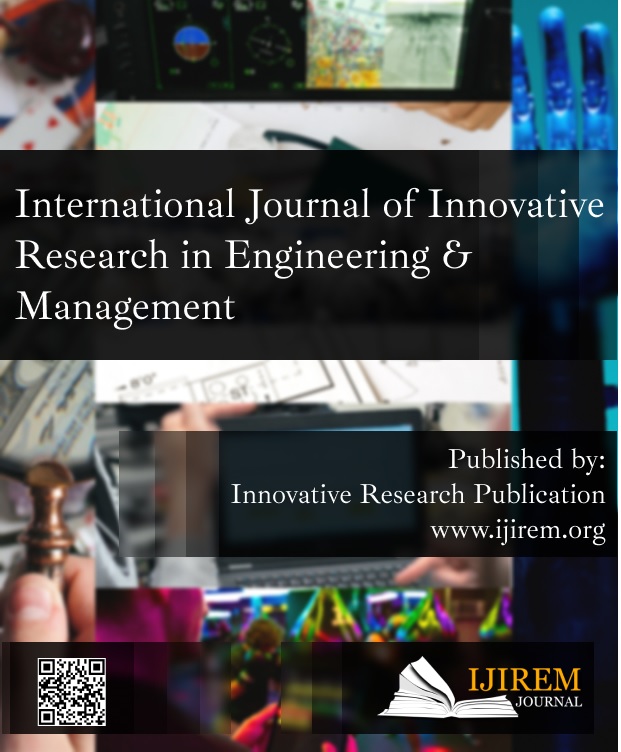Descriptive Analysis of Gross Enrolment Ratio in Higher Education in India
Keywords:
Gross Enrollment Ratio, Higher Education, Higher Education Institution, Indian Education System, National DevelopmentAbstract
Higher Education is a necessary factor of the economic development of a nation. An educated person has to bear a getting to know technique that ensures the empathetic environment and social justice in society. Higher Education empowers human beings with skills, knowledge, and awareness. There has been a rising fashion in Gross Enrolment Ratio in education sector of India in the past times. Gross Enrolment Ratio in Higher Education involves a variation in extraordinary courses. It has been increasing at primary, secondary and tertiary ranges of educational attainment. Gender disparity in diverse courses points out the discrepancies in the inclusive growth of women. The existing learn about ambitions at explaining the vogue of Gross Enrolment Ratio in Higher Education Sector of India from the one year 2008-09 to the year 2020-21. It tends to take a look at the tendencies of Gross Enrolment Ratio in Higher Education System of India in case of both boys and ladies who are enrolled in higher education in India for the duration of the time duration of the study. The fundamental intention of learn about is to recognize the dissimilarity in male and female Gross Enrolment Ratio and gender inequality in one-of-a-kind courses. The study is exploratory in nature and based on primary and secondary data. The main findings of the study indicate that the Recognition of Prior Learning in higher education is one of the recommended drivers that can help India to achieve its target of 50% GER by 2035. The research has found that by recognizing the experience of the individuals and systematically mapping it with the outcomes of various National Skill Qualification
Downloads
References
P. Mittal and B. Patwardhan, “Measuring Access to Higher Education in India,” Int. High. Educ., 2020.
M. T. Navani, “Gender and Higher Education in India: Negotiating Equity with Access,” in Gender and the Changing Face of Higher Education in Asia Pacific, 2019.
D. Mitra and T. K. Ghara, “Gross Enrolment Ratio in Higher Education: A District Level Analysis of the State of West Bengal,” Asian Rev. Soc. Sci., 2019, doi: 10.51983/arss-2019.8.3.1600.
R. Rastogi and A. Priya, “Recent trends in Indian higher education system,” Int. J. Adv. Sci. Technol., 2020.
H. Srimathi and A. Krishnamoorthy, “Higher education system in India: Challenges and opportunities,” Int. J. Sci. Technol. Res., 2019.
A. Singh, “Reservation in Indian Education System,” Int. J. Trend Sci. Res. Dev., 2018, doi: 10.31142/ijtsrd17072.
C. R Nagwand and P. Vishwanatha, “Sources of Financing Higher Education in Karnataka: A Study on Access, Participation and Relevance,” SSRN Electron. J., 2019, doi: 10.2139/ssrn.3363218.
J. F. Jacob, “Human capital and higher education: Rate of returns across disciplines,” Econ. Bull., 2018.
B. S. Chaudhary, “ISSUES AND CHALLENGES IN GEOMATICS EDUCATION IN HARYANA STATE, INDIA,” Int. Arch. Photogramm. Remote Sens. Spat. Inf. Sci., 2012, doi: 10.5194/isprsarchives-xxxix-b6-37-2012.
E. S. Lissen and A. S. Bautista, “National education policy 2020. Building a new educational system in India,” Rev. Esp. Educ. Comp., 2021, doi: 10.5944/REEC.37.2021.29048.
S. Singh and S. Ehlers, “Recognition of Prior Learning,” Andragoška spoznanja, 2019, doi: 10.4312/as.25.1.69-87.
M. M. van Houten, “Vocational education and the binary higher education system in the Netherlands: higher education symbiosis or vocational education dichotomy?,” J. Vocat. Educ. Train., 2018, doi: 10.1080/13636820.2017.1394359.
E. Mousavinasab, N. Zarifsanaiey, S. R. Niakan Kalhori, M. Rakhshan, L. Keikha, and M. Ghazi Saeedi, “Intelligent tutoring systems: a systematic review of characteristics, applications, and evaluation methods,” Interactive Learning Environments. 2021, doi: 10.1080/10494820.2018.1558257.
